Medical advancements have vastly improved the efficacy of drug addiction treatment; there are medications that can ease withdrawal side effects, reduce cravings, and even reverse an overdose. But the key to lasting recovery, and ultimately, sobriety, will not be found in a pill. The most effective addiction recovery endeavors will come from behavioral readjustment, something which is primarily achievable through counseling and therapy.
One of the most effective types of therapy for addiction recovery is cognitive behavioral therapy. This specialized form of psychotherapy can facilitate lasting changes in a person’s thoughts and actions, helping them to recognize their triggers and develop practical strategies for overcoming them, find the motivation to stay sober, as well as identify why they may have turned to drugs in the first place. Read on for examples of cognitive behavioral therapy techniques and why they (and cognitive behavioral therapy as a whole) are effective for addiction recovery.
What Is Cognitive Behavioral Therapy & How Does It Work?
The primary goal of cognitive behavioral therapy is to promote behavioral changes. Unlike other types of therapy, CBT is more concerned with the present than the past. Rather than focusing on the ‘how’ and ‘why’ at the root of drug addiction, it instead considers the current situation that the addicted person finds themselves in and aims to uncover things like what keeps us using drugs and what gets in our way when we try to quit. Based on those answers, a cognitive behavioral therapist works with patients to:
- Create tailored strategies to avoid those people, places, and things that trigger us
- Create practical coping mechanisms for real-life situations (as opposed to abstract ones)
- Recognize their patterns that lead or contribute to drug-using behavior or thoughts (and when they’re falling into them again)
The greatest strength of CBT, particularly in the scope of addiction treatment, is how practical the approach is. It provides real-life solutions to the real-life situations that prompt drug users to continue their harmful ways. The tips, techniques, and coping mechanisms learned in this therapy approach help individuals manage their responses to external and internal stimuli. Further, it helps them to reframe their relationship to those stimuli which gives them the capability of breaking harmful thought or behavioral patterns.
A few other reasons why CBT is so highly favored:
- An evidence-based treatment that’s appropriate for all ages
- Is just as effective when conducted in-person as it is online
- Highly effective for the treatment of other conditions such as post-traumatic stress disorder, obsessive-compulsive disorder, eating disorders
- Doesn’t require long-term treatment to see results
Cognitive Behavioral Therapy Techniques
What happens in a CBT session may vary depending on the specific type of CBT being practiced (several highly-specialized subsets of CBT have arisen such as dialectical behavioral therapy and functional analytic psychotherapy). Here are a few examples of cognitive behavioral therapy techniques that are generally used within this therapy approach:
Guided Discovery
This technique teaches individuals how to consider different perspectives from their own. Questions that both support and challenge your current beliefs will be asked.
Role-Playing
No, there are no costumes involved. The therapist will have their patient play out various scenarios that are directly related to struggles one might face in recovery such as turning down an invite to use or a stressful situation where drugs were the go-to coping method. Patients can explore potential outcomes and feel more prepared when those situations do eventually arise.
Cognitive Reframing
At its core, cognitive behavioral therapy is all about changing a patient’s negative pattern of thinking. This can be challenging as introspection forces individuals to face the good and bad about themselves. Reckoning with times we’ve been wrong, cruel, or selfish isn’t easy, but the reward is self-discovery and a greater ability to reflect in the moment.
Journalling
Sometimes things that are difficult to speak out loud are easier to write on paper. Journaling is also beneficial in that it serves as an outlet for those who might not have anyone else to talk to. Another huge benefit of writing is that patients can look back at past journal entries and see the progression of their thoughts.
Relaxation & Stress Management
Drugs are often used as a coping mechanism for stressful situations. Having healthy alternatives to alleviating stressful moments or reacting to them is pivotal in undoing the habit to turn to substances to manage.
What Happens In A CBT Session?
Cognitive behavioral therapy sessions are typically about an hour and the frequency of sessions can vary depending on your stage of recovery as well as whether you’re in an inpatient or outpatient addiction treatment program. Expect to have homework like journaling and worksheets.
Sources:
https://www.apa.org/ptsd-guideline/patients-and-families/cognitive-behavioral

